A liquid stands at the plane level in the U-tube when at reat. If areals of cross-section of both the limbs are equal, what will be the difference in height h of the two limbs of U-tube, when the sustem is given an acceleration a in horizontal direction towards right as shown?
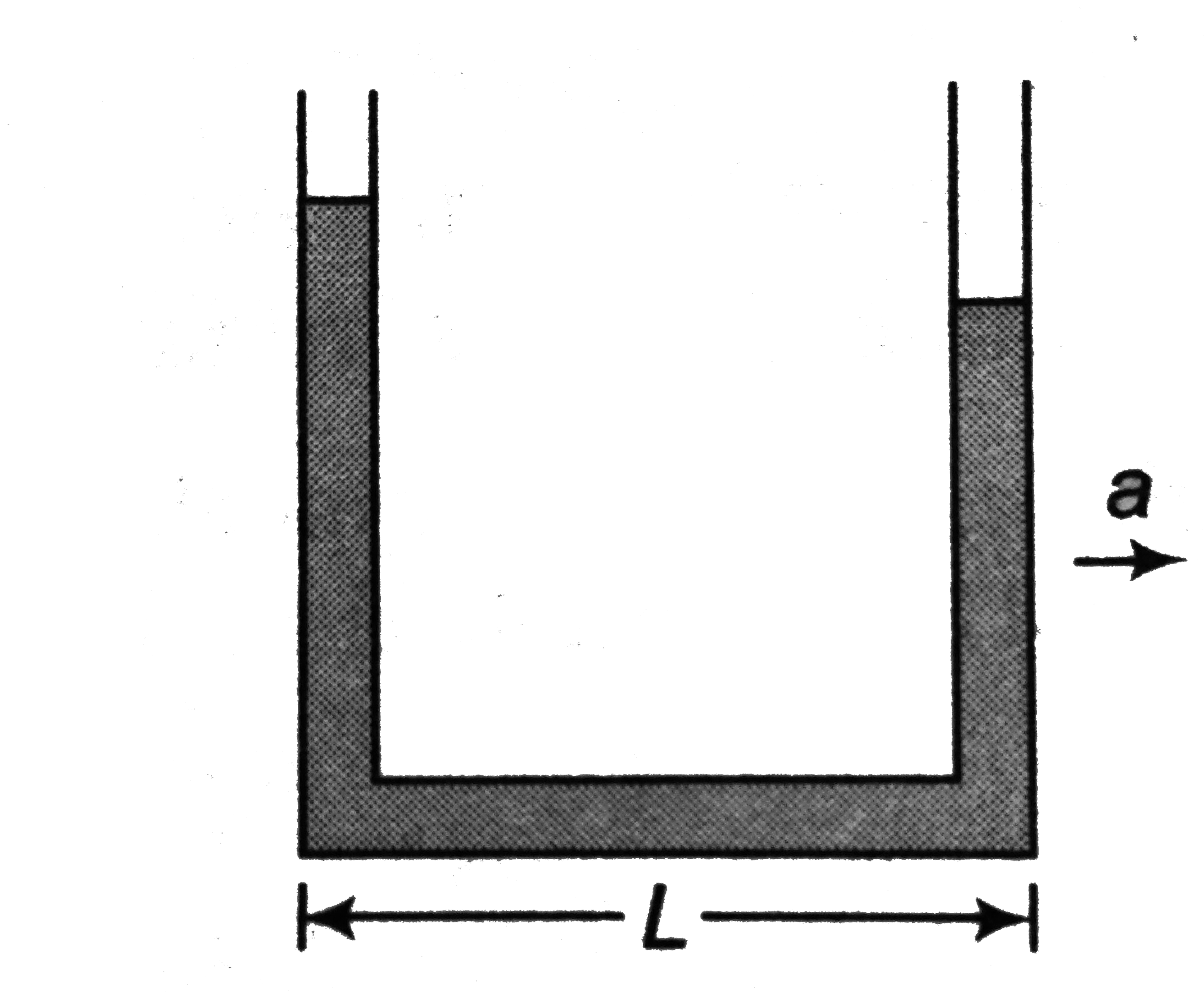
aL2g
gL2a
gLa
aLg
The correct Answer is:D
Let P1 and P2 be the presure at the bottom of the left and right ends of the tube, respectively. 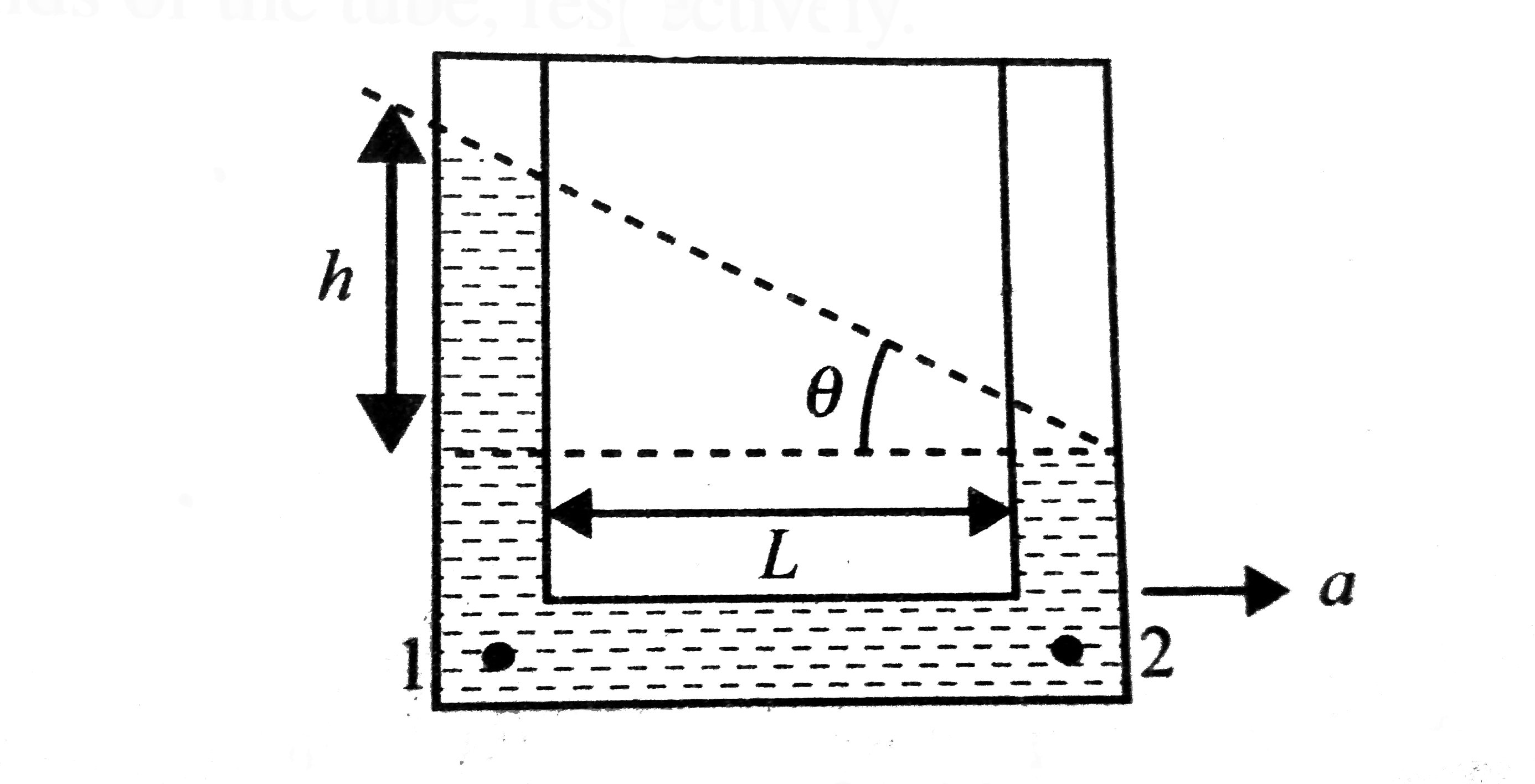
Then F=(P1−P2)A=ρghA
Where A is the cross section of the tube.
The mass of the liquid in the horizontal portion is
m=ρLA
Now, F=ma
⇒ρghA=ρLAa
∴h=aLg
Topper's Solved these Questions
- FLUID MECHANICSBOOK - CENGAGE PHYSICSCHAPTER - FLUID MECHANICSEXERCISE - Multipe Correct
15 Videos
- FLUID MECHANICSBOOK - CENGAGE PHYSICSCHAPTER - FLUID MECHANICSEXERCISE - Assertion-Reasoning
8 Videos
- FLUID MECHANICSBOOK - CENGAGE PHYSICSCHAPTER - FLUID MECHANICSEXERCISE - Subjective
25 Videos
- DIMENSIONS & MEASUREMENTBOOK - CENGAGE PHYSICSCHAPTER - DIMENSIONS & MEASUREMENTEXERCISE - Integer
2 Videos
- GRAVITATIONBOOK - CENGAGE PHYSICSCHAPTER - GRAVITATIONEXERCISE - INTEGER_TYPE
1 Video
Similar Questions
A U-tube containing a liquid is accelerated horizontally with a constant acceleration a0. If the separation between the vertical limbs is l find the difference in the heights of the liquid in the two arms.
View SolutionA U tube is supported with its limbs vertical and is partly filled with water. If the inner diameter of the limbs are 1cm,and 0.01 cm , respectively, what will be the difference in height of water in the two limbs? S.T. or water 70×10−3Nm−1. Angle of contact , θ=0∘.
View Solution
Knowledge Check
A U- tube shown in Fig. containing two liquids of specific gravities ρ1 and ρ2 is given an acceleration a in the horizontal direction. What is the ratio ρ1:ρ2?
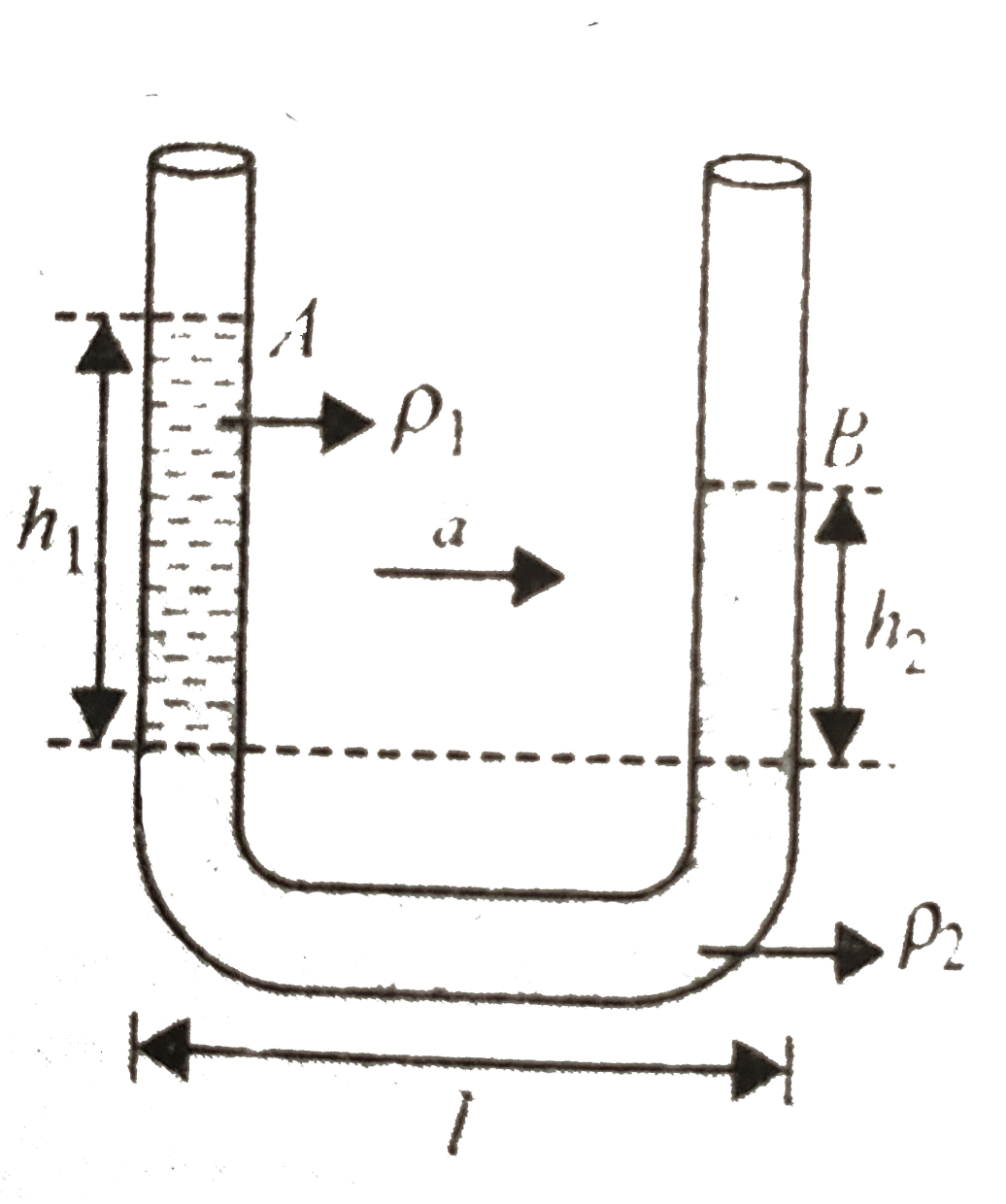 Ala+h2gh1gBla+h1gh2gCla+h2g2h1gDla+h1g2h2g
Ala+h2gh1gBla+h1gh2gCla+h2g2h1gDla+h1g2h2gWhen at rest, a liquid stands at the same level in the tubes shown in figure. But as indicated a height difference h occurs when the system is given an acceleration a towards the right. Here, h is equal to
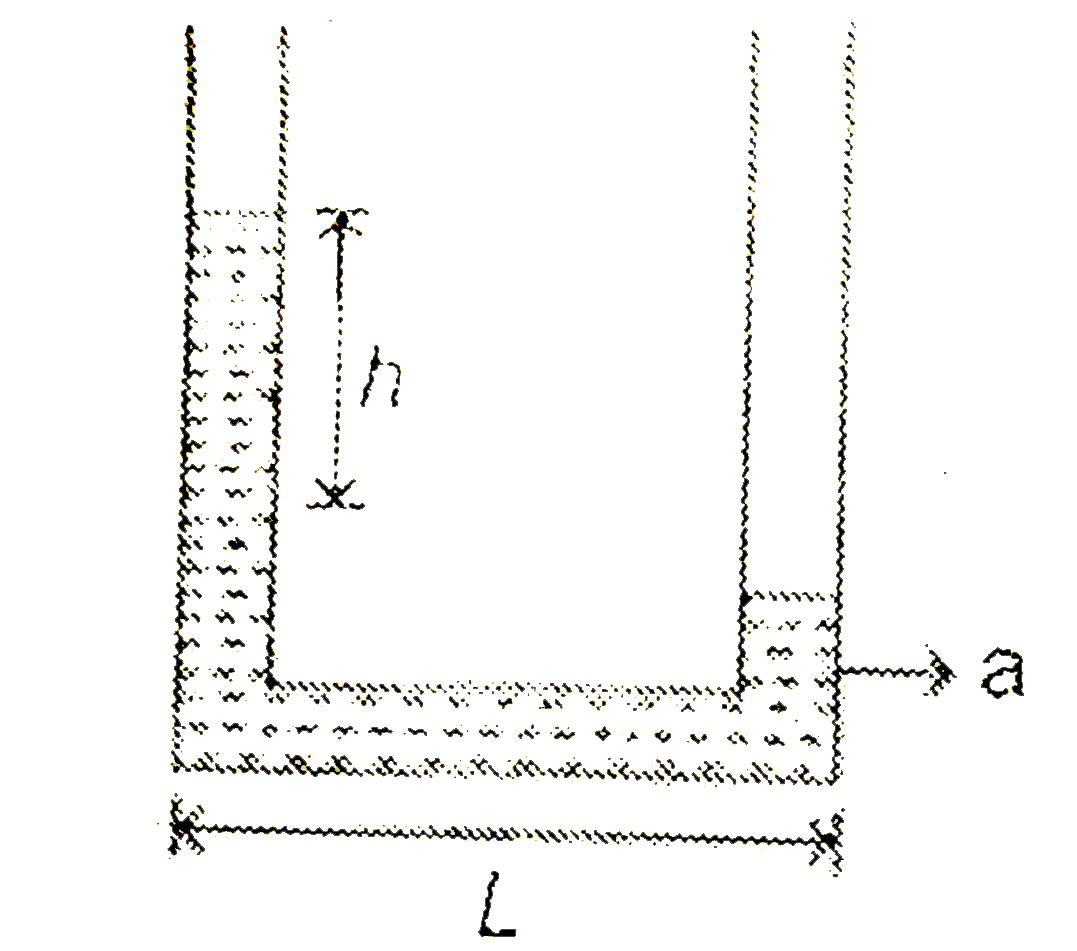 AaL2gBgL2aCgLaDaLg
AaL2gBgL2aCgLaDaLgThe area of cross-section of the wider tube shown in fig., is 800cm2 . If a mass of 12 kg is placed on the massless piston, what is the difference in the level of water in two tubes.
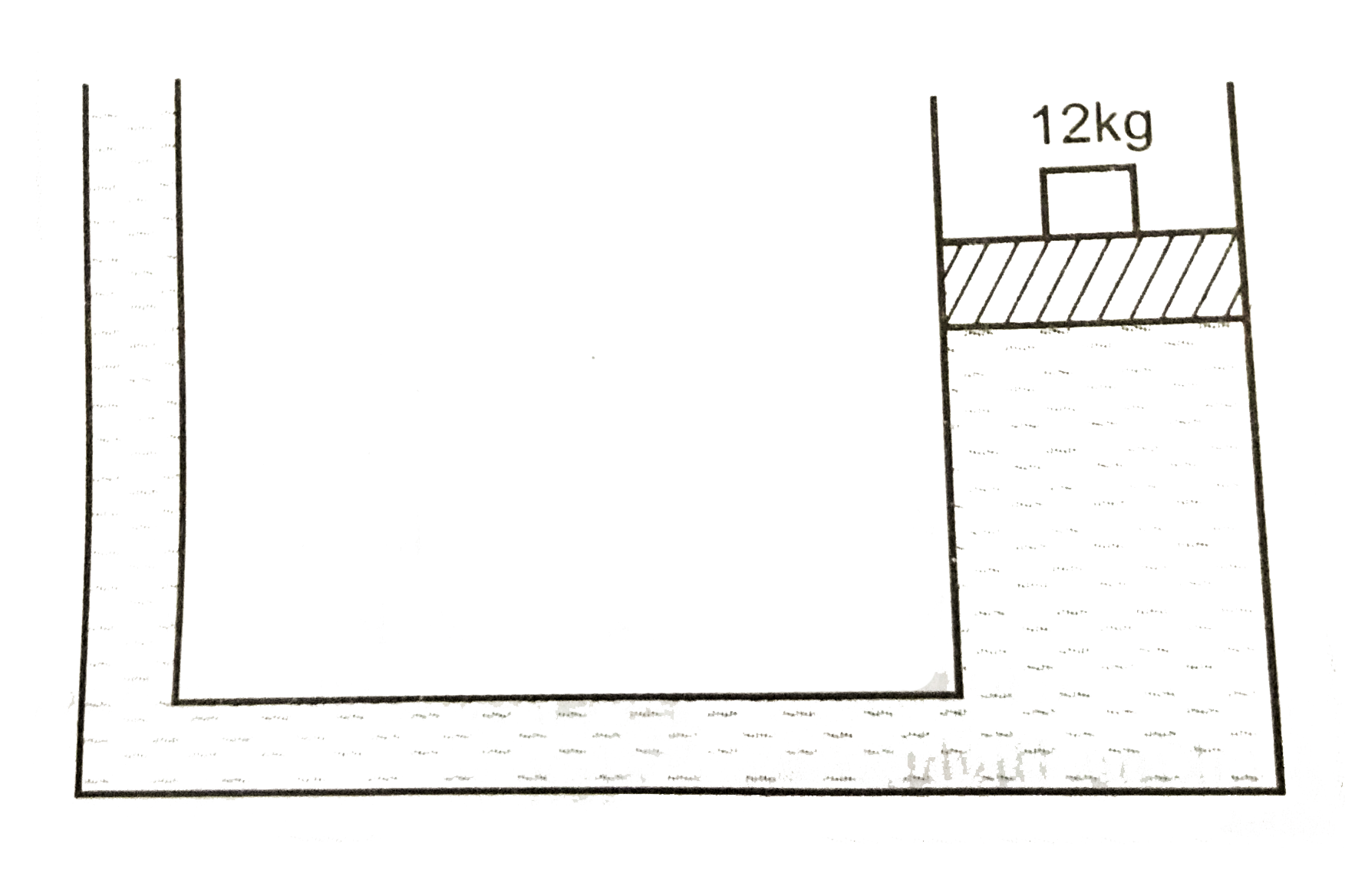 A10 cmB6 cmC15 cmD2 cm
A10 cmB6 cmC15 cmD2 cm
A U tube is rotated about one of it's limbs with an angular velocity ω. Find the difference in height H of the liquid (density ρ) level, where diameter of the tube d<<L.
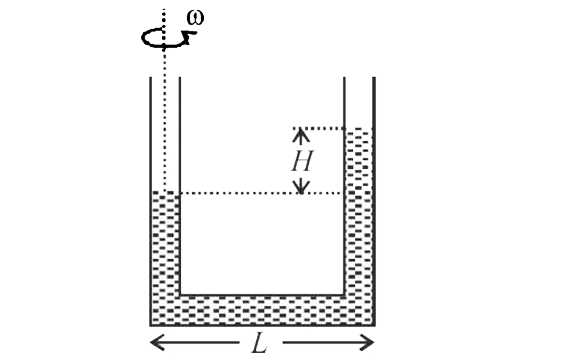
View SolutionThe area of cross section of the wider tube shown in figure is 900cm2. If the boy standing on the piston weights 45 kg, find the difference in the levels of water in the two tubes.

View SolutionThe area of cross-section of the wider tube shown in fig., is 800cm2 . If a mass of 12 kg is placed on the massless piston, what is the difference in the level of water in two tubes.

View SolutionFig, shows a U-tube of uniform cross-sectional area A accelerated with acceleration a as shown. If d is the seperation between the limbs. Then the difference in the levels of the liquid in the U−tube is
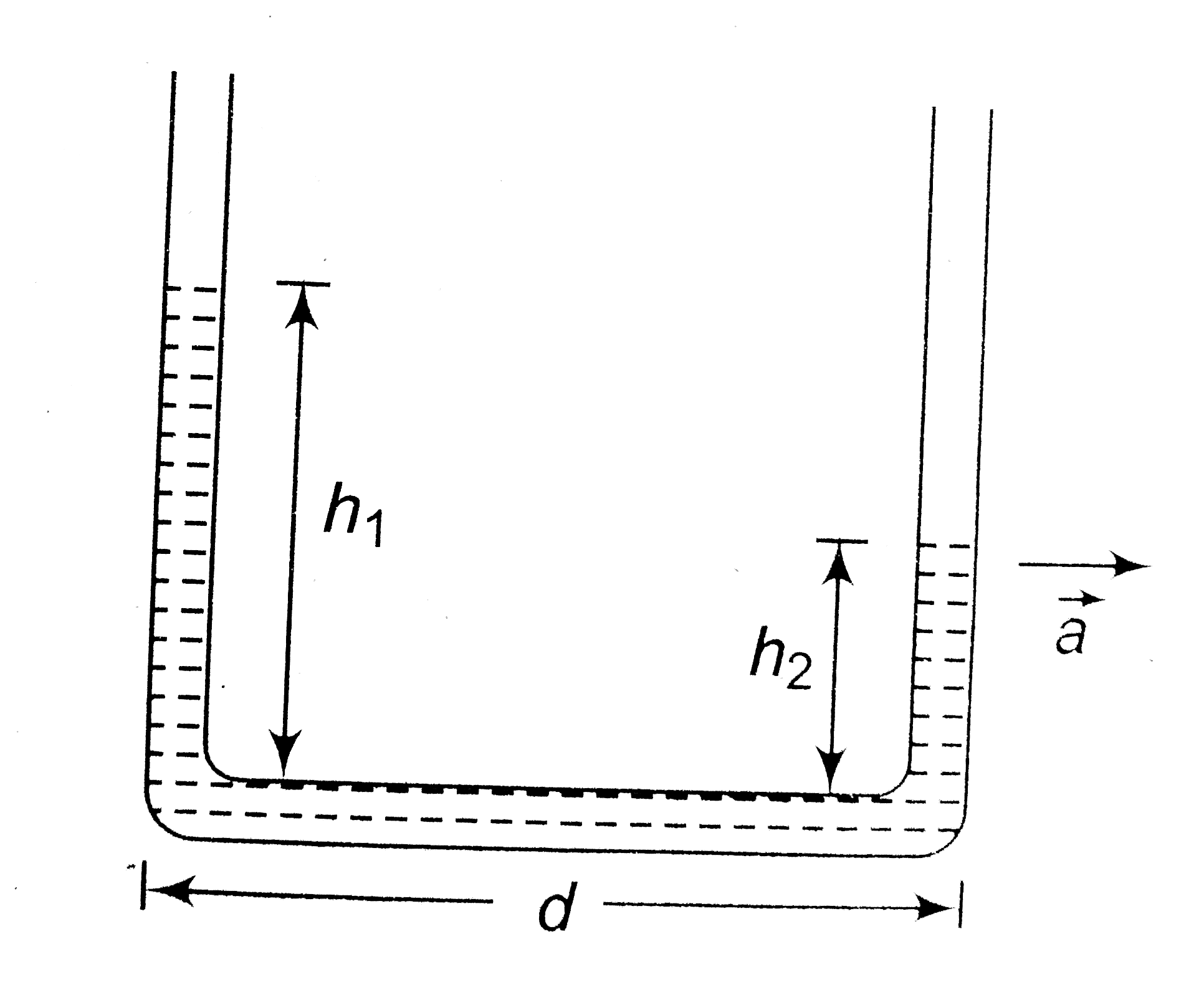
View SolutionWhat will happen if there is a vacuum just above one limb of the U-tube half filled with liquid as shown in figure?
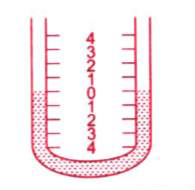
View Solution